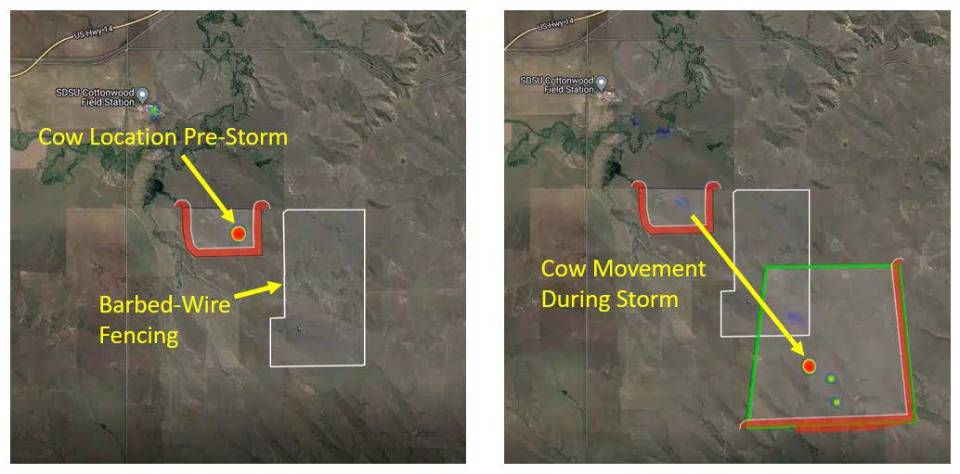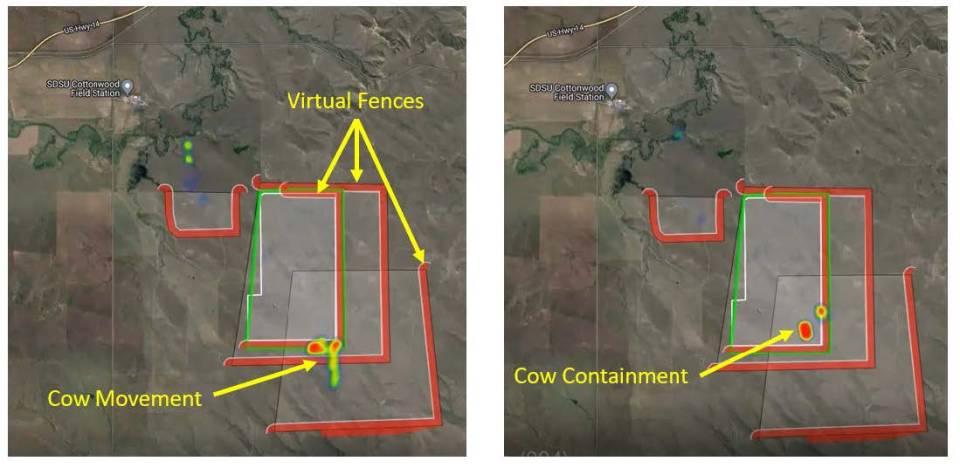
Using virtual fencing technology to rescue cattle in a blizzard
“These are once-in-a-generation storms” was the common phrase used across the news media covering the blizzard conditions in South Dakota—and over much of the northern United States—in December 2022. Snow drifts reached as high as 20 feet making the prospect of leaving one’s house not only undesirable or unsafe, but simply impossible in many cases.
Under such extreme weather conditions, ranchers not only have to concern themselves with the safety of their family members, but with that of their animals. During the Atlas blizzard in October 2013, over 35,000 cattle were lost in South Dakota alone, resulting in millions of dollars in economic damages. Many ranchers, risking their own lives, rescued as many animals as they could by digging them out of snow drifts.
Though the livestock casualties in the December 2022 storms were not nearly as high as in the Atlas blizzard, many animals were lost as ranchers scrambled to gather their cattle into safe havens. The snow was so high that fence lines were indiscernible, and thus, proved ineffectual in keeping cattle within manageable boundaries. Many cattle, therefore, wandered off— literally over fences—being continually pushed by strong cold winds—in some cases, for miles.
“When fences are buried with snow, animals can drift for miles during blizzards, which can make it very difficult for producers to find and care for animals. This can impact animal performance and reproduction, which is essential to the livelihood of South Dakota producers,” said Dr. Jameson Brennan, assistant professor of animal science and livestock grazing specialist at South Dakota State University (SDSU).
During December’s blizzards, Dr. Brennan and the team at SDSU’s Cottonwood Range and Livestock Field Station faced their own challenges tracking and rescuing cattle.
To their good fortune, they had implemented virtual fencing technology on their herd prior to the storms. “Having the Vence collars on our cows was a game changer,” said Dr. Brennan referring to Vence Corp (a wholly-owned subsidiary of Merck Animal Health). Vence provides a virtual fencing solution that combines GPS tracking, with LoRaWAN communication and a cellular backhaul, to track and manage the movements of cattle and bison in rangeland applications. Collars are applied to each animal to enable independent tracking and control.
“One of the benefits of using virtual fencing technology is the ability to know where your animals are located on the landscape in real-time,” added Dr. Brennan. “This was particularly useful during this past winter during the blizzards that impacted our Cottonwood Field Station.”
In the following images, taken from Vence’s Herd Manager software application, the orange dots in the “heat map” show the location of approximately 30 cows. As demonstrated here, the storm’s strong winds drove the cows out of the initial virtual fence enclosure and across multiple barbed-wire fences.

“Using the virtual fencing system, we were not only able to see where the cows were moving, but were able to contain the cows within the Field Station boundaries by applying a series of virtual fences. This allowed our station manager to more easily locate and gather them once the storm passed,” said Dr. Brennan.

Dr. Brennan added, “During the storm, many of the physical fences in the area literally disappeared under snow drifts. Without the virtual fence system, it would have been very difficult to determine where the storm-driven animals had wandered to. They could have potentially drifted for miles.”
With increased adoption of virtual fencing in blizzard-prone regions, cattle producers can expect a significant decrease in the number of livestock fatalities during future “generational storms”.
– Photos provided courtesy of SDSU Cottonwood Range and Livestock Field Station.
